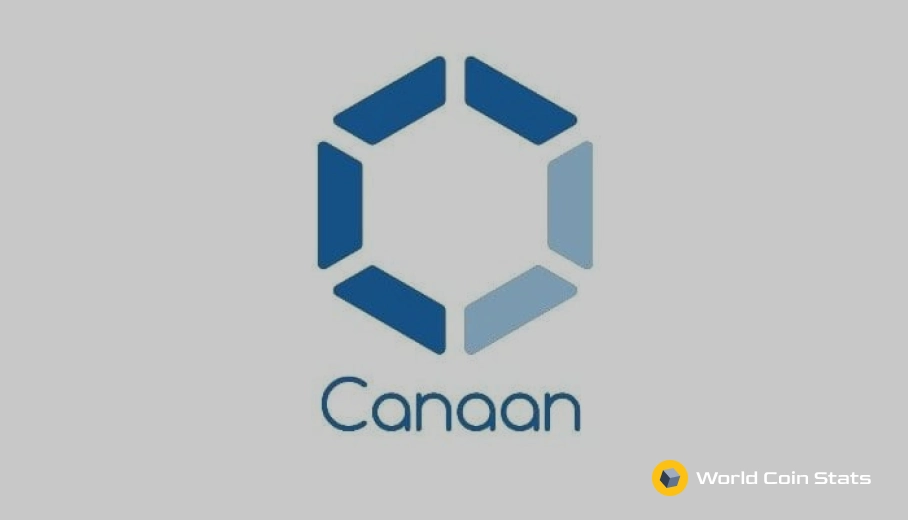The 3 Most Promising Small Cap Cryptocurrencies of 2021
You have probably heard about large cap cryptocurrencies like Bitcoin (BTC), Ethereum (ETH), and Binance Coin (BNB). These cryptocurrencies have made headlines for their massive price increases in 2020 and 2021.
However, there are many cryptocurrencies with significantly smaller market caps that look extremely promising for the remainder of 2021 and onwards. This article will review the five most promising of those small cap cryptocurrencies.
Note: We are using a very broad definition of small cap cryptocurrencies. Cryptocurrencies in the microcap range are far too speculative to offer good projections.
Duck Protocol (DUCK)
Project Name: Duck Protocol
Segment: DeFi
Fully Diluted Market Cap: ~$250 million ($0.44/DUCK)
Short Term Projection: ~$400-$500 million ($0.65/DUCK)
Medium Term Projection: ~$1 billion ($1.65/DUCK)
Fully Scaled Projection: ~$2 billion ($4/DUCK)
Duck.Unit.Protocol’s USDP token is a stablecoin backed by microcap cryptocurrencies. Basically, you can think of it as the Maker DAO of small cap cryptocurrencies. Users can borrow the stablecoin USDP by using various small cap cryptocurrencies as collateral.
This means that users can get some cash without selling their underlying tokens. That is a very enticing offer and has been popular with large cap cryptocurrencies (ie. Bitcoin and Ethereum), but Duck Protocol is the first protocol to offer this service for small cap cryptocurrencies.
However, you can’t really invest in a stablecoin because, well, the price is stable. But you can invest in the governance token of the protocol. In this case, the governance token you want to invest in is called DUCK.
How DUCK Makes Money
DUCK makes money from the Duck Protocol in two ways, which is a very good thing because it provides some diversification of cash flows for DUCK holders.
The first way DUCK makes money is by collecting lending fees. This is a pretty basic concept to understand. Here’s an example of how lending fees work on the platform:
- A user borrows 5,000 USDP on Duck Protocol by locking a cryptocurrency as collateral.
- User pays back the 5,000 USDP + a lending fee (7%-12%).
- The user receives their collateral back
In this case, that lending fee is collected and distributed to DUCK holders in USDP tokens. This means that the coin has some dividends as more borrowers use the protocol.
The other way that DUCK holders earn money is when collateral is liquidated. Collateral gets liquidated via auction when the price of the collateral falls under a certain liquidation ratio. Here is an example of how that works.
- A user borrows 5,000 USDP on Duck Protocol by locking an amount of cryptocurrency worth 4,000 USDP as collateral.
- The value of the collateral falls below the liquidation ratio.
- Bots that scan the collateralized debt positions (CDP) for ones that have fallen below the liquidation ratio trigger liquidation.
- A Dutch auction begins to auction off the CDP.
- The auction winner must pay the market value of the collateral + the liquidation fee (~17%)
Again, this liquidation fee goes to the holders of DUCK tokens as a sort of distribution or dividend.
The interesting part with this type of model is that Duck Protocol actually makes money when the market goes up and it makes even more money when the market goes down and CDPs get liquidated.
This is an anti-fragile business model and something that is not too common in cryptocurrency. And something that makes Duck Protocol extremely enticing as an investment.
Future Growth Potential
Duck Protocol has huge future growth potential. We would rank it as the highest future growth potential of any small cap cryptocurrency at the moment.
The reason is simple – altcoins are becoming more popular and Duck Protocol has positioned itself as a DeFi option for those wishing to get some liquidity from their holdings.
Now, is Duck Protocol the type of small cap cryptocurrency that will spike in price within a few months?
Probably not, but anything is possible. It has positioned itself as one of the more enticing options out there if you believe that the cryptocurrency market is entering what many would deem an “alt cycle” where altcoins become exceedingly popular.
Basic Attention Token (BAT)
Project Name: Brave Browser
Segment: Utility Token
Fully Diluted Market Cap: ~$1.5 billion ($0.68)
Short Term Projection: ~$3 billion ($1.36)
Medium Term Projection: ~$6 billion ($4.00)
Fully Scaled Projection: ~$30 billion ($20)
Basic Attention Token is likely the most speculative small cap cryptocurrency on this list. But it is worth mentioning it because it has seen tremendous growth over the past couple of years despite people writing it off as a junk cryptocurrency.
What Basic Attention Token (BAT) Does?
Basic Attention Token is a utility token on the Brave browser. The Brave browser itself is an interesting project as it is a privacy focused internet browser.
So, how can a browser be privacy focused? And what does a privacy focused browser have to do with a utility coin?
Brave is privacy focused in two ways. First, it’s open source, which is always more privacy focused because the code can be independently audited for any spyware or trackers in the browser itself.
More importantly, Brave has built in ad blockers, cookie blockers, and tracker blockers. That does not mean there are no advertisements on Brave, though.
Instead, Brave browser removes the ads and replaces it with their own ads. And this is where Basic Attention Token comes into the picture.
Advertisers pay Brave to display ads. Brave then rewards advertisers that display ads that maintain user attention. Naturally, the reward is paid out in BAT. This (further) incentivizes advertisers to develop ads that
Furthermore, users receive a small share of BAT as a sort of kickback for watching advertisements. Now, it’s not a large share, but any amount is good considering Google does not pay users for interacting with advertisements.
Future Growth Potential of Basic Attention Token (BAT)
Basic Attention Token does have some potential for growth. It mostly hinges on Brave browser increasing market share of internet browsers.
Yes, it’s a long shot for Brave to overtake Chrome, but it could happen. The founder of Brave browser is Brendan Eich. The same Brendan Eich that founded Mozilla and created Javascript.
That’s to say that Brave does at least have a good team behind it that knows how to create a browser that people will actually use.
Brave is also the browser most often recommended by privacy experts, so it also has that going for it.
Now, Brave does not need to have 60% market share to see a tremendous increase in price. Even just a few percentage points of market share could cause the price of BAT to moon as more users use BAT and advertisers receive payment in it.
This is a small cap cryptocurrency to at least keep an eye on as the world slowly moves to open-source and/or decentralized technology.
Polygon (MATIC)
Project Name: Polygon (formerly Matic Network)
Segment: Layer 2 Scaling Solution
Fully Diluted Market Cap: ~$1.5 billion ($0.68)
Short Term Projection: ~$3 billion ($1.36)
Medium Term Projection: ~$6 billion ($4.00)
Fully Scaled Projection: ~$30 billion ($20)
Polygon is a little different than many small cap cryptocurrencies you might have in mind. For one, Polygon is not really a small cap cryptocurrency depending on who you ask.
Again, our definition of small cap cryptocurrency is much wider than the standard definition – this definition limits growth somewhat, but it also greatly reduces risk compared to microcap cryptocurrencies.
Anyway, Polygon is one of the more promising layer 2 scaling solutions on Ethereum. And it does have a cryptocurrency associated with it that should see tremendous growth if Matic wins the layer 2 scaling race.
The next section will cover exactly what Polygon does and a roadmap for tremendous growth in 2021 and beyond.
What Polygon (MATIC) Does?
As mentioned previously, Polygon is a layer 2 scaling solution on/for Ethereum. The technical details of how Polygon works are far beyond the scope of this article, but the general gist is that Polygon is on a sidechain of the Ethereum mainchain.
This means that users of Polygon only have to pay the insanely high Ethereum gas fees to enter and exit the sidechain.
Ethereum gas fees do not need to be paid when conducting transactions on the Matic sidechain. Instead, extremely low Matic gas fees are paid when on the sidechain. The transactions are also much faster on Polygon compared to Ethereum.
Both those two points are the main draws to Polygon because Ethereum has been facing major congestion problems with the emergence of decentralized finance (DeFi). In fact, the congestion problems have scared many potential users of DeFi off because they cannot afford the $30-$50 Ethereum gas fees.
Future Growth Potential of MATIC
Polygon has tremendous potential for future growth in the near term to medium term future. At the moment, Ethereum does not have any viable scaling solution on the horizon.
We know that EIP-1559 is slated for release next month. However, that will likely not have as much impact on the transaction fees as many are led to believe.
The only true hope for Ethereum solving the scaling problem is the switch to a proof of stake validation model. That will happen at some point in the future. However, Polygon will remain a promising project until Ethereum switches to proof of stake. Even then, Matic still has some avenues for future success when Ethereum makes the switch to proof of stake.
The Advantages of Smaller Cap Cryptocurrencies
Smaller market cap cryptocurrencies have a few advantages over the handful of cryptocurrencies with large market caps. Here are some of those advantages.
Growth Potential
The biggest, and most enticing, advantage of small cap cryptocurrencies is that they have much more potential for growth.
Why is this the case?
Well, a small cap cryptocurrency is almost always in the early stages of development or simply has not yet become widely used. The more use a cryptocurrency has, then the more the price increases.
To give an example, Bitcoin was once a small market cryptocurrency. The demand for bitcoin rose as it became more popular and the price subsequently increased.
Small cap cryptocurrencies all have this potential because an extremely small percentage of the broader cryptocurrency market actually owns (or uses) these small cap cryptocurrencies.
Diversified Portfolio
The other advantage of small cap cryptocurrencies is that they offer some diversification to your crypto portfolio. Everyone likes diversification – you never want to keep all your eggs in the same basket.
Small cap cryptocurrencies offer a good opportunity to diversify your crypto holdings. But don’t get carried away with small caps. They have a tendency to closely track the price of Bitcoin, which almost eliminates all the diversification.
Of course, this is why it is a wise idea to choose small cap cryptocurrencies that do not closely track Bitcoin in price. Duck Protocol being a good example of a cryptocurrency that does not track Bitcoin.
In fact, the price of DUCK actually has a tendency to increase during a market downturn as that results in more liquidations.
Anyway, a diverse portfolio will greatly reduce the volatility that many cryptocurrency holders dislike about the sector.
Where To Buy Small Cap Cryptocurrencies
Buying small cap cryptocurrencies is often the most challenging part of the entire process. Some small cap cryptocurrencies have a surprising amount of exchanges available to purchase them while others do not.
The best exchange for small cap cryptocurrencies, in our opinion, is Binance. It has over 500 cryptocurrencies available and it is a relatively trustworthy centralized exchange.
However, there is one place that is extremely easy to buy small cap cryptocurrencies:
Decentralized exchanges.
That’s right, pretty much every small cap cryptocurrency can be purchased on a decentralized exchange. This is because most small cap cryptocurrencies are not built on their own blockchain. They are actually built on top of another blockchain (usually Ethereum), which makes it extremely simple to purchase them on decentralized exchanges.
The best decentralized exchanges on Ethereum are Uniswap and SushiSwap. PancakeSwap is the best decentralized exchange on the Binance Smart Chain.
Those two blockchains house the majority of small cap cryptocurrencies and almost all microcap cryptocurrencies.
Measuring Small Cap Cryptocurrency Success
Most investors measure the success of their cryptocurrency investments by looking at the percent increase since purchase.
That is the logical thing to do. It’s how we measure the success of investments in stocks, real estate, and commodities.
Unfortunately, measuring the success of small cap cryptocurrencies that way is not the most accurate way.
The reason is actually quite simple.
Small cap cryptos are as risky, usually riskier, than Bitcoin. So, if the percent increase YTD of your small cap investment was 500% while Bitcoin increased 1000%, then the small cap is actually doing worse.
You could have just bought Bitcoin for less risk and made a much larger profit. Basically, think of Bitcoin as a sort of index fund for cryptocurrencies. Is your investment beating the crypto index fund (Bitcoin)?
If it is beating the index fund (Bitcoin), then it is doing alright. If it is not beating the index fund (Bitcoin), then that investment has some problems despite the 500% gains.
Note: Bitcoin is not an index fund, but it’s useful to think of it that way when comparing it to other cryptocurrencies because the market as a whole follows Bitcoin.
Small Cap Crypto Portfolio Allocation
Some advocate having a majority of your crypto portfolio allocated to small cap cryptocurrencies.
In our opinion, that is a terrible idea.
An aggressive ratio would be at least 50% in Bitcoin and Ethereum with the rest in small caps and a negligible amount in microcaps (under 1%). But the ideal rate is more like 70% in Bitcoin and/or Ethereum with the rest made up of small caps and simply ignoring microcaps until they become small caps.
The general idea is that you want Bitcoin and Ethereum to make up most of your portfolio because those two (especially Bitcoin) are good barometers for the strength of the cryptocurrency market as a whole.
Is Bitcoin up this year?
That means the rest of the cryptocurrency market is up. And that sort of confidence in price increases is what will assure you that you do not get burned when one of the small cap cryptocurrency projects you have invested in fails.
Closing Thoughts
We hope that was a good overview of the three most promising small cap cryptocurrencies of 2021. Our choices covered a range from true small caps to relatively large (but still small in the grand scheme of crypto) cap coins.
These coins offer a good hedge against the Bitcoin and Ethereum in your portfolio. They also have the potential to greatly outperform the two main cryptocurrencies, which should be the goal of any cryptocurrency investment.




